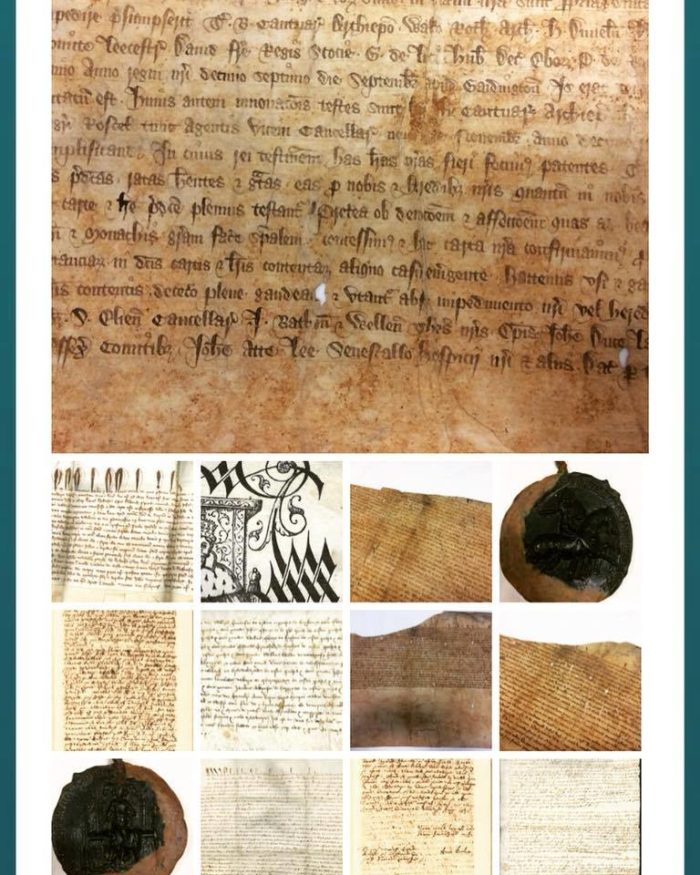Revolt and Royalty: Rebellion within the Records of West Yorkshire Archive Service
Current IMS MA student, Ella Muir, has curated a new exhibition, as part of an innovative module focusing on practical archival skills. We asked her what the exhibition was about, and how she found the process of curation.
Saturday 18 May 2018 commemorated the marriage of Prince Harry and Meghan Markle: a momentous occasion in British history, and a royal wedding quite unlike any that had taken place before it. The day was significant too as the anniversary of the execution of Queen Anne Boleyn, sentenced to death by her husband, King Henry VIII, in 1536.
With all of its symbolic significance, it was on this day that my digital exhibition was launched: a display of the records held by the West Yorkshire Archive Service pertaining to revolt and royalty in the Middle Ages and the Early Modern period. This project was the outcome of a year-long module, Making History: Archive Collaborations, which aims to provide students with practical experience of working within the heritage sector, as well as an understanding of the various challenges faced. Other partner organisations include Leeds City Museum, the Royal Armouries, and the University’s own Special Collections, with greatly varying outputs from each student involved.

Part of Ella's exhibition on medieval and early modern royalty.
In addition to being interested in exploring the world of curation, thematically I knew that I’d ideally like to align the project with my wider academic specialisation: royalty. One of the most rewarding and beneficial aspects of this module, and of my experiences with the WYAS, was the huge amount of creative control students are afforded. Supported by the wonderful team of archivists, I was able to spend several months perusing the catalogues and collections, before cultivating an output tailored to my interests, both academic and professional.
Having undertaken modules in Medieval Latin and palaeography, I was able to apply my newly-acquired skills to authentic manuscripts, charters, cartularies and letters from the Middle Ages and beyond, transcribing and translating sections of the texts. It was particularly enjoyable to write the panels and labels for the documents themselves, as well as the content of the blog; an informative piece that also crucially needed to entertain, and a welcome change from the highly methodological writing a student of Medieval History is used to!
I am particularly interested in public-facing representations of history that allow for creativity. By effectively digitising these sources, my aim was to provide an accessible and lasting interpretation of the records, for a diverse and most importantly, inclusive, audience. The archive exists and strives to provide a welcoming and engaging service that will preserve the past, serve the present and protect the future. Archives are known as silent spaces, but they’re also filled with long-forgotten voices; their tales interwoven in the pages and the parchment. Through this exhibition, we hope to bring those stories to life.
You can read my exhibition here.
